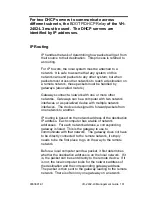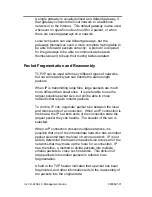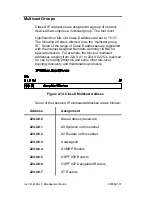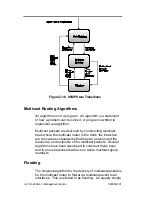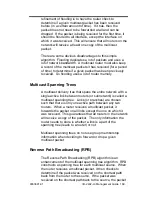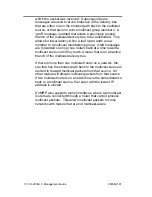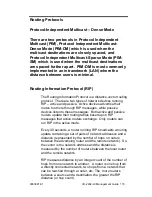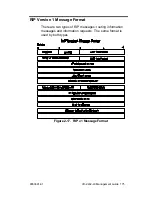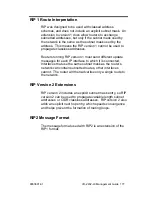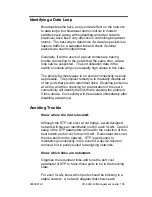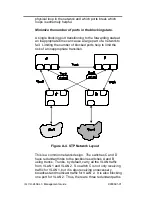
170
VH-2402-L3 Management Guide
9033691-01
is forwarded on all links except the link on which the packet
was received. If the packet was not received on the shortest
link back to the source, the packet is dropped.
If a link-state routing protocol is in use, RPB on a local router
can determine if the path from the source through the local
router to an immediately neighboring router. If it is not, the
packet will be dropped at the next router and the packet
should not be forwarded.
If a distance-vector routing protocol is in use, a neighboring
router can either advertise its previous hop for the source as
part of its routing update messages. This will ‘poison-
reverse’ the route (or have the local router prune the branch
from the multicast source to the neighboring router because
the neighboring router has a better route from the source to
the next router or subnetwork).
Since multicast packets are forwarded through the shortest
route between source and destination, RPB is fast. A given
router also does not need information about the entire
spanning tree, nor does it need a mechanism to stop the
forwarding of packets.
RPB does not use multicast group membership information
in its forwarding decisions.
Reverse Path Multicasting (RPM)
Reverse Path Multicasting (RPM) introduces an
enhancement to RPB – an explicit method to prune
branches of the spanning tree that have on active multicast
group members for the source. RPM constructs a tree that
spans only subnetworks with multicast group member and
routers along the shortest path between the source and the
destinations.
When a multicast router receives a multicast packet, it is
forwarded using the RPB constructed spanning tree.
Subsequent routers in the tree that have no active path to
another router are referred to as leaf routers. If the multicast
packet if forwarded to a leaf router that has no active
multicast group members for the source, the leaf router will






